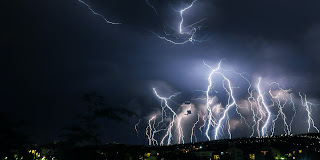4 Essential Lightning Protection Products
Franklin’s lightning rods have been used as a means of collecting and controlling the awesome and destructive power of lightning. But is it wise to allow thousands of amperes to flow near sensitive electronic equipment, especially when charge transfer systems (CTSs) are available and can prevent strikes in protected areas? With businesses around the world installing 500 such systems per year, it's a concept worth investigating.
In 1971, Roy B. Carpenter Jr. came across the CTS technology while working for the United States Air Force. Carpenter was a chief engineer for the first space shuttle design team. After leaving the USAF, he expanded and patented CTS into the dissipation array system (DAS).
It wasn't until the early 1990s that the theory behind DAS advanced and developed into the CTSs available today.
Let us look at some of the lightning protection products available with CTS technology:
- The Dissipation Array System (DAS) is one of the most common configurations of a Charge Transfer System (CTS) and has been designed to prevent a lightning strike to both the protected area and the array itself. It prevents a lightning strike to a given area and is able to reduce the potential between the site and the storm cloud cell, so that the potential is not high enough for a stroke to terminate within the area. That is, the DAS releases, or leak off, the charge induced in the area of concern to a level where a lightning stroke is impractical.
- The Spline Ball Ioniser (SBI) is a multipoint device. It’s designed to efficiently produce ions from many points simultaneously. As the electrostatic field increases, a single point will create streamers and encourage a strike. In contrast, the multipoint ionizer starts the ionization process at a somewhat higher potential; but as the potential increases, the ionization current increases exponentially. Since these ions are spread over a large area, no streamers are generated. In extreme situations, a luminous cloud of ions is produced, causing a momentary glow around the array and a sudden burst of current flow.
- Grounding system The ionizer assembly alone, of course, is not sufficient. The system must be grounded. The grounding system is an essential lightning protection product. It provides the source of charge to keep the ion current flowing through the array and discharge the site. In order to ensure a long-term low-impedance contact there should be at least two redundant connections of the CTS to the grounding system.
- A surge protection device is also a part of lightning protection product, as the damage isn’t limited to a direct strike alone – indirect strikes on any data or power lines can be equally catastrophic. LEC has UL listed surge protection products like Facility Guard (protection capacity of up to 400,000 amps per phase), Transient Limiters (protection capacity of up to 100,000 amps per phase), DC surge protectors (protection capacity of up to 10,000 amps in a range of voltages for all DC applications), etc.
Patented Lightning protection products from LEC is something that every industry will benefit from.
Contact LEC to get the most competitive quote!



Comments
Post a Comment